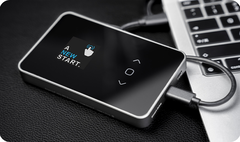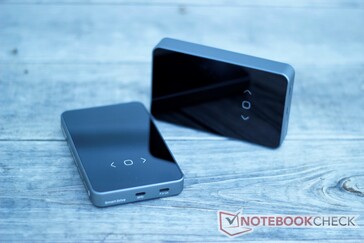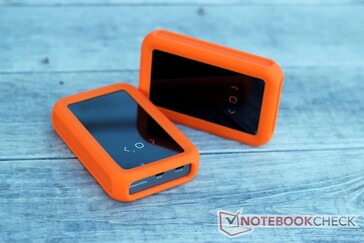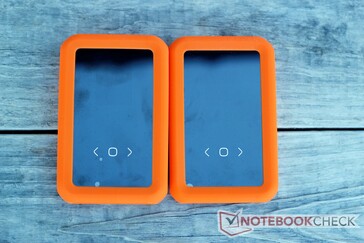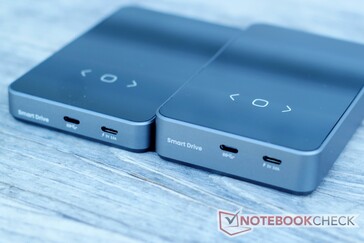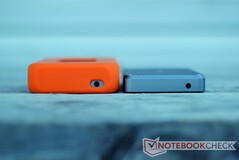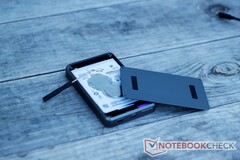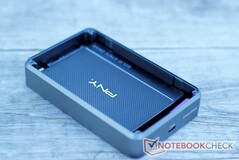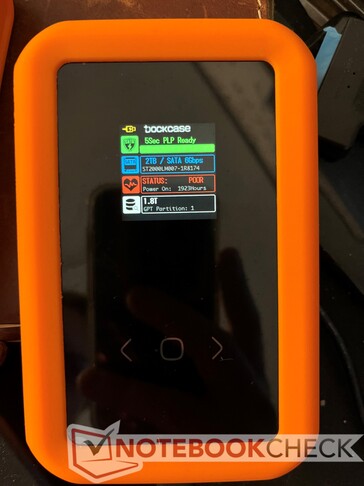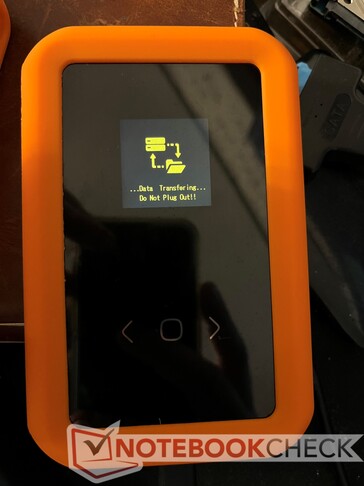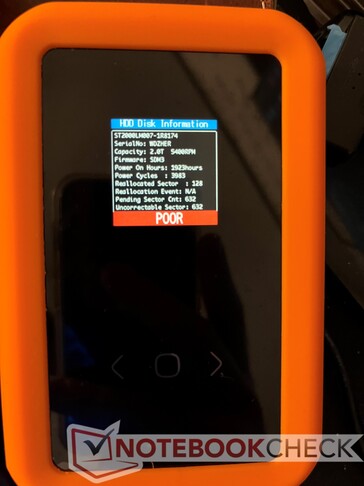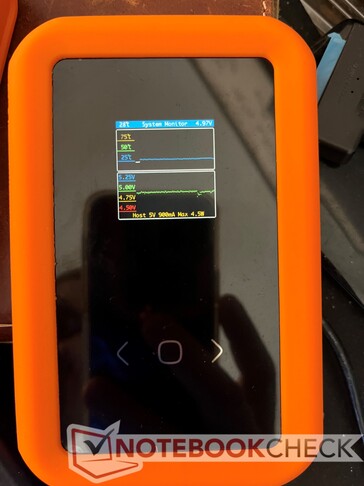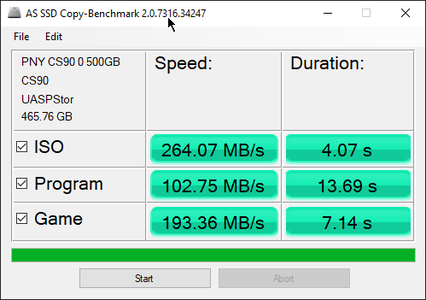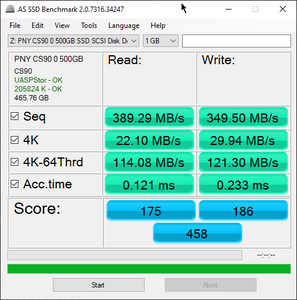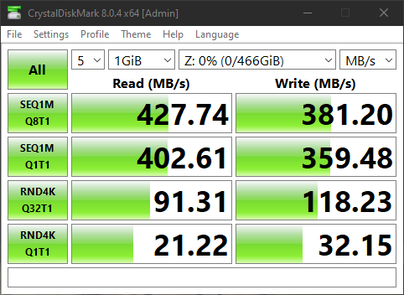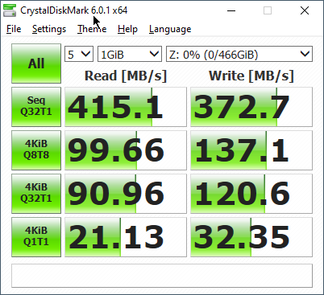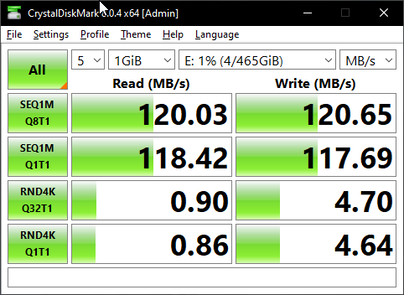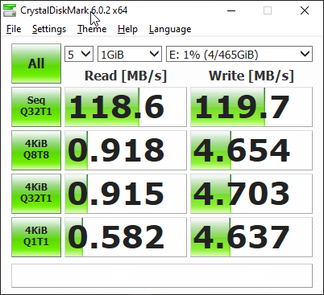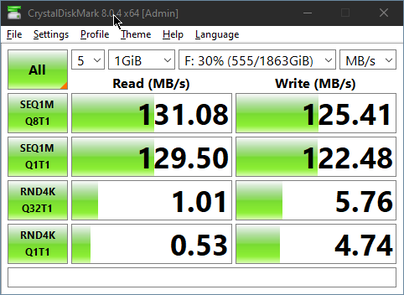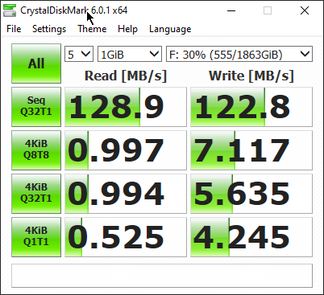Dockcase recently released a smart M.2 hard drive enclosure, which I reviewed here. While I liked the featureset of the M.2 enclosure, I questioned its utility since it didn't take full advantage of the PCIe speeds of most M.2 drives. Dockcase seems to have addressed my primary concern with the 2.5-inch Smart Hard Drive enclosure; the 2.5-inch form factor is much more common and, as a result, 2.5-inch drives are much more affordable than M.2 drives. Does Dockcase's newest smart enclosure rise to expectations? Here are my thoughts on the Dockcase 2.5-inch Smart Hard Drive Enclosure.
Design
Dockcase offers two models of the SATA Smart Hard Drive Enclosure. The only differences between the two are their physical size, weight, and how long of a charge they can hold for power loss prevention (PLP). The standard enclosure measures 126.5 x 78 x 16.5 mm (4.98 x 3.07 x 0.65 in) and weighs roughly 150 g (0.33 lbs), sans drive. The Pro model is a bit taller (22.5 mm, 0.89 in) and heavier (175 g, 0.39 lbs) but has an identical footprint. Due to its added height, the Pro model can accommodate drives between 7 and 15 mm (0.28 - 0.59 in), while the standard model caps out at 9.5 mm (0.37 in). The standard enclosure holds enough charge for 5 seconds of PLP; the Pro increases this to 10 seconds.
Both enclosures are made of cool aluminum, and their tops are covered with glass. These materials give an overall premium impression; the enclosures are very well built and look stunning. The top panel features a high-resolution LCD with capacitive touch controls below it. This LCD displays relevant information, such as drive health, voltages, current activity, etc. I'll touch on that later.
Like the M.2 variant, installing a drive is as simple as removing four Phillips Head #00 screws and lifting off the bottom panel. The case is just long enough to fully place a drive in flat and slot it into the SATA connector without much fuss. The entire process is easy and takes less than 3 minutes.
Along the front are two USB-C connectors. One is used for data transfers and powering the drive, while the other serves as a 15 Watts auxiliary power supply. Since smartphones (and some other electronics) may not provide enough juice to power the drive when connected to the enclosure, this port provides up to an extra 15 Watts to ensure transfers are possible and stable. The rear of the case has a single clicky button used for navigating the on-screen menus.
Like its M.2 brother, the 2.5-inch enclosure is the best-built hard drive case I've ever laid my hands on.
Features and Performance
The Dockcase enclosures are more than just pretty faces. They offer the same feature set as the M.2 enclosure, which is a high note. The full-color LCD on the top case displays lots of information, ranging from drive details to health to voltage usage and more. These screens are easy to navigate thanks to the capacitive buttons under the display. The screens can be rotated 90 degrees at a time with a double-click of the button on the back of the case.
The biggest draw is the embedded PLP. Like with the M.2 enclosure, the PLP system takes a few seconds after plugging the enclosure in to charge up, but it works as advertised. When unplugging the drive (with or without ejecting it via your OS), the PLP lasts for about 5 seconds on the standard enclosure and 10 seconds on the Pro model. PLP is designed to prevent data corruption and drive failure due to a sudden power loss; it gives the installed drive a precious few seconds to prevent serious damage. It may not keep an individual file from being corrupted, but it should prevent the entire drive from suffering a catastrophic failure.
The main USB-C port on the enclosure is specced as USB 3.2 Gen 2, or 10 Gbps. As such, SATA drives are able to run at full speeds, which cap out at 6 Gbps. This goes for both USB-C and USB-A ports, which the drive can connect to thanks to the adapter attached to the included USB-C cable. According to AS SSD and CrystalDiskMark, the enclosures take full advantage of the SATA standard. SSDs hit expected scores, as do standard HDDs. There is no room for complaint in this department. For reference, I tested a 2 TB 5400 RPM HDD from Seagate, a 500 GB SSHD (8 GB cache) from Seagate, and a 500 GB SATA SSD from PNY. The enclosures have no differences in transfer rates.
Conclusion
The Dockcase Smart Hard Drive Enclosures are solid options for techies looking for a way to reuse an old SATA drive they have lying around. They offer plenty of nice features to help you keep a keen eye on your external storage drives. These features are also not readily available with most other external drives (at least, not on the case itself). The addition of built-in PLP makes these appealing to enthusiasts and professionals alike.
However, these enclosures don't come cheap. The standard enclosure retails for US$99, while the Pro model goes for $129. Dockcase is offering some deals through its Kickstarter (which is active until October 18, 2022). These enclosures are on the pricey side, but if you're serious about external storage, there's not really anything like the Dockcase Smart enclosures on the market right now.
If the Dockcase Smart Hard Drive Enclosure looks interesting, you can pre-order one from Dockcase via Kickstarter. Shipping is expected to start in November.
Disclaimer: The author of this review received the Dockcase 2.5-inch smart enclosure free of charge for the purpose of testing.




